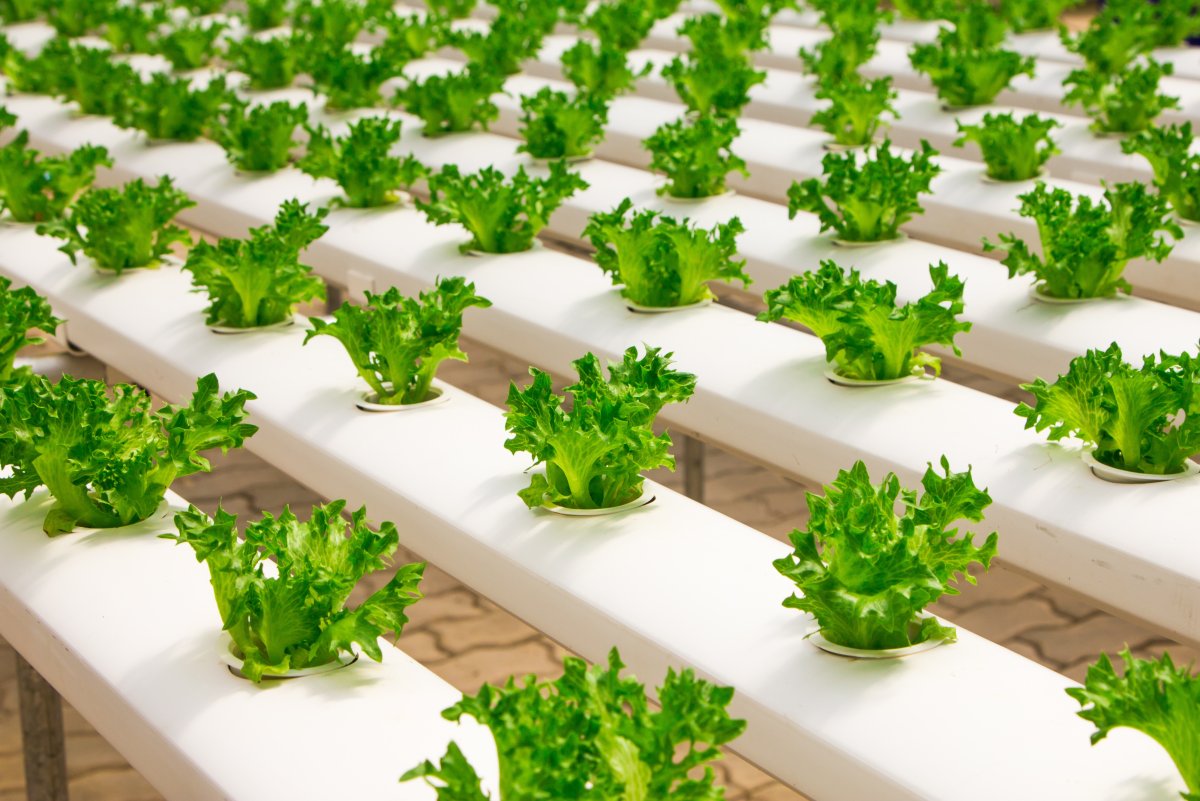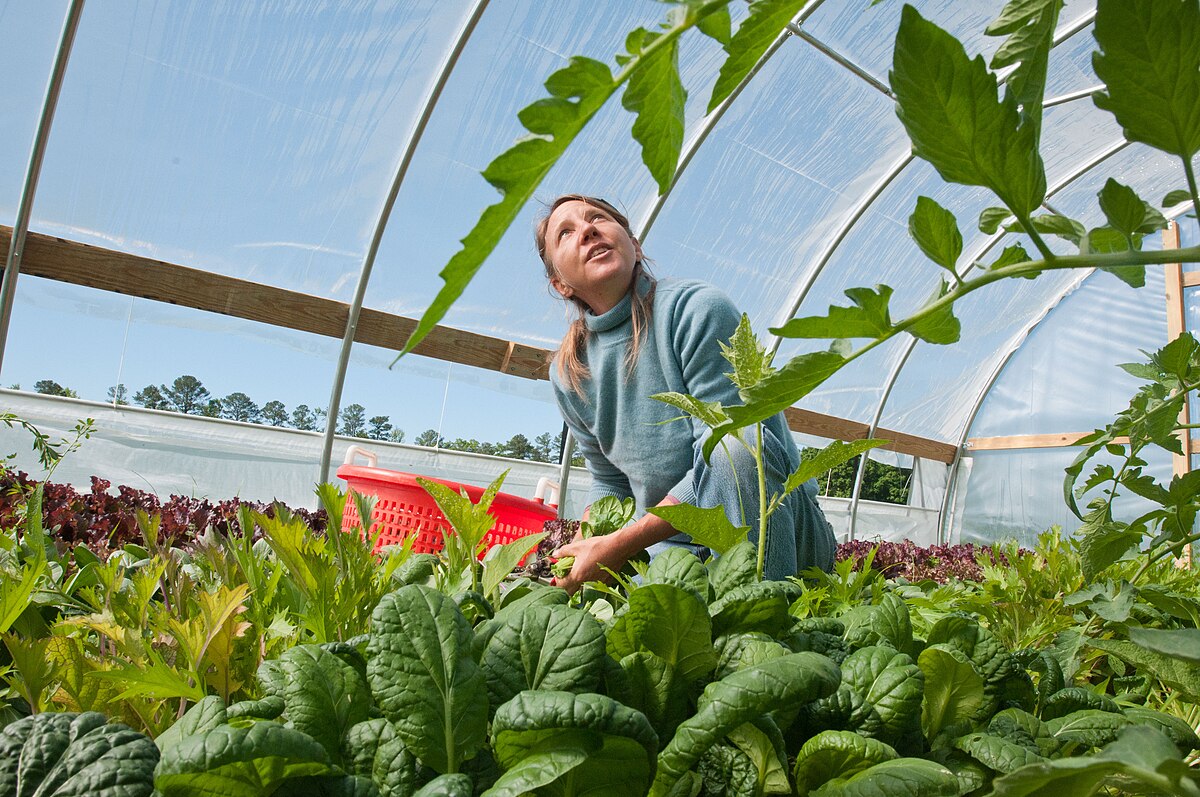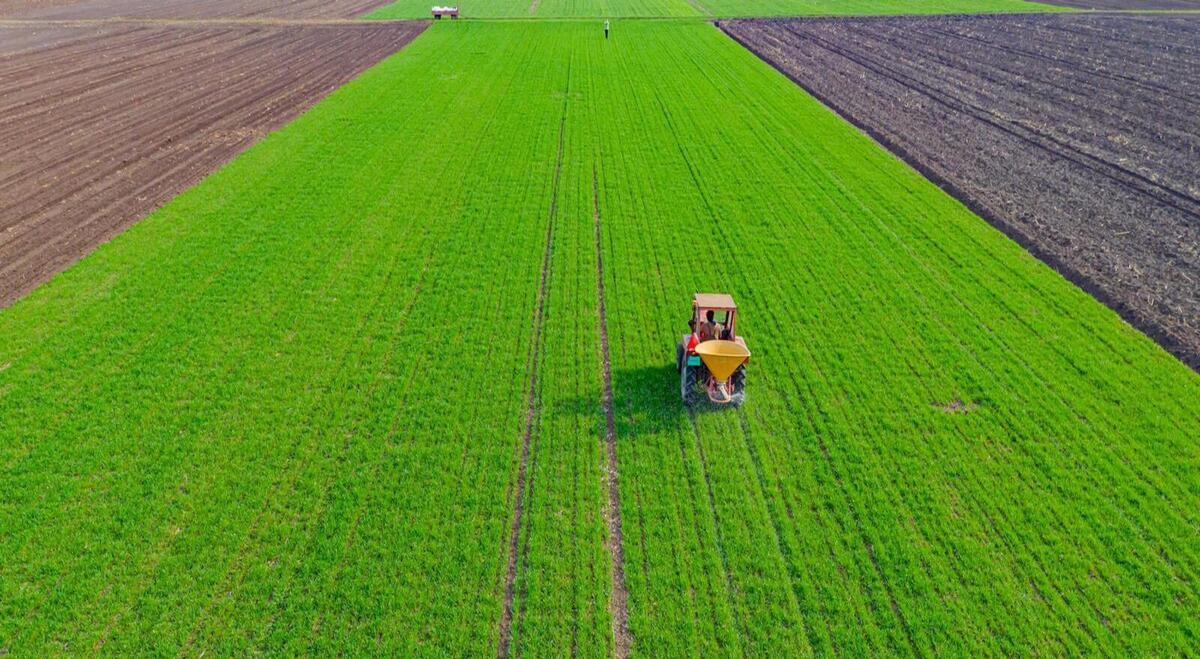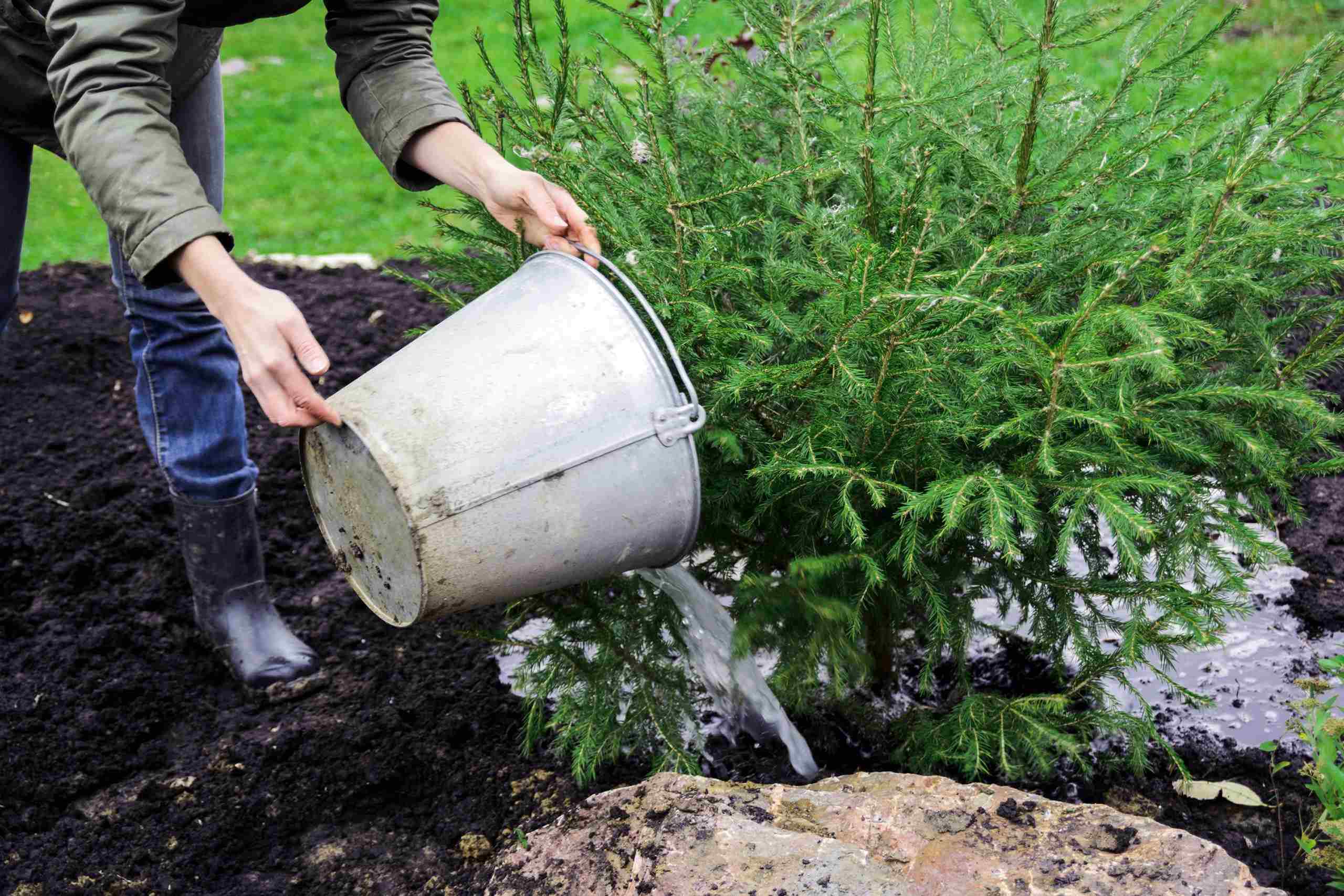Home>Gardening News and Trends>Gardening Trends>In Which Situation Would Hydroponics Be Most Useful For Sustainable Farming?


Gardening Trends
In Which Situation Would Hydroponics Be Most Useful For Sustainable Farming?
Modified: February 10, 2024
Discover the latest gardening trend of hydroponics and how it can revolutionize sustainable farming practices. Explore the situations where hydroponics is most beneficial for efficient and eco-friendly gardening.
(Many of the links in this article redirect to a specific reviewed product. Your purchase of these products through affiliate links helps to generate commission for Chicagolandgardening.com, at no extra cost. Learn more)
Table of Contents
- Introduction
- Advantages of Hydroponics in Sustainable Farming
- Limited land availability
- Water scarcity
- Harsh climatic conditions
- High population density
- Contaminated soil or polluted areas
- Optimal resource utilization
- Precise Nutrient Management
- Year-round Crop Production
- Challenges and Limitations of Hydroponics in Sustainable Farming
- Conclusion
Introduction
As our world becomes more populated and natural resources become more limited, sustainable farming practices are gaining increasing importance. One innovative method that has gained significant attention in recent years is hydroponics. Hydroponics is a soilless farming technique that allows plants to grow in a nutrient-rich water solution. It offers numerous advantages over traditional soil-based agriculture, making it an attractive option in various situations.
In hydroponics, plants are grown in water with added nutrients, eliminating the need for soil. This allows for precise control over nutrient levels, water usage, and environmental conditions, leading to improved crop yields and reduced resource waste. Additionally, hydroponic systems can be set up in both small-scale urban settings and large-scale commercial farms, making it a versatile solution for sustainable farming.
By understanding the advantages and challenges of hydroponics, we can identify the situations where it is most useful for sustainable farming. In this article, we will explore the benefits of hydroponics in various scenarios and discuss how it can contribute to a more sustainable and efficient agricultural system.
Advantages of Hydroponics in Sustainable Farming
Hydroponics offers several key advantages in sustainable farming, making it a viable option in various situations. Let’s explore some of these advantages:
- Limited land availability: In areas where arable land is scarce or expensive, hydroponics provides a space-efficient farming solution. Since hydroponics eliminates the need for soil, crops can be grown vertically or in stacked systems, maximizing land utilization.
- Water scarcity: Hydroponics uses significantly less water compared to traditional farming methods. By recycling and reusing water, hydroponic systems can reduce water consumption by up to 90%. This makes it particularly suitable for regions facing water shortages or those aiming for efficient water management.
- Harsh climatic conditions: In extreme climates such as deserts or areas with extreme temperature fluctuations, hydroponics allows for control over the growing environment. By providing a controlled environment, hydroponics enables year-round cultivation and protects plants from adverse weather conditions.
- High population density: With the global population on the rise, hydroponics offers a solution for producing food in urban areas with limited space. By utilizing vertical farming techniques, hydroponic systems can be set up in buildings, rooftops, or repurposed warehouses, bringing food production closer to urban populations.
- Contaminated soil or polluted areas: Hydroponics eliminates the reliance on soil, which is particularly advantageous in areas with contaminated soil or high pollution levels. By growing plants in a controlled, soilless environment, hydroponics allows for the production of safe and healthy crops.
- Optimal resource utilization: Hydroponics provides precise control over nutrient delivery, ensuring that plants receive the exact nutrients they need for optimal growth. This reduces waste and improves resource efficiency compared to traditional farming, where nutrients may be lost through leaching or runoff.
- Precise nutrient management: Hydroponic systems allow farmers to monitor and adjust nutrient levels easily, ensuring that plants receive the ideal balance of nutrients for optimal growth. This precise nutrient management results in healthier and more nutrient-dense crops.
- Year-round crop production: Hydroponics enables year-round production of crops regardless of seasonal variations. By providing a stable and controlled environment, hydroponics eliminates dependence on weather conditions, allowing for a constant and consistent supply of fresh produce throughout the year.
These advantages make hydroponics a valuable tool in sustainable farming, allowing for efficient resource utilization, increased crop yields, and reduced environmental impact.
Limited land availability
In many parts of the world, finding arable land for traditional agriculture is becoming increasingly difficult. However, hydroponics offers a solution to this problem by maximizing land utilization and making the most out of limited space.
Unlike traditional farming, which requires ample land for planting crops, hydroponics allows for vertical farming or stacked systems. By utilizing these techniques, multiple layers of plants can be grown in the same footprint, effectively multiplying the growing area. This is particularly valuable in areas with high population densities or urban environments, where land is scarce and expensive.
Furthermore, hydroponic systems can be set up indoors or even in abandoned buildings, minimizing the need for extensive land resources. This opens up opportunities for urban agriculture, enabling the cultivation of fresh produce within cities, closer to where it is consumed.
By utilizing vertical space and repurposing underutilized areas, hydroponics optimizes land utilization and makes sustainable farming possible, even in areas with limited land availability.
Water scarcity
Water scarcity is a pressing issue in many regions around the world. Traditional farming methods often require large amounts of water for irrigation, resulting in significant water waste and further exacerbating water scarcity. Hydroponics, on the other hand, offers a water-efficient farming solution.
In hydroponics, water is recycled and reused, minimizing water loss. The plants are grown in a closed-loop system where water, enriched with nutrients, is continuously circulated. This recirculation system drastically reduces the amount of water required compared to traditional farming.
Furthermore, hydroponics allows for precise control over water usage. By closely monitoring the water needs of plants, farmers can provide the necessary amount of water without any excess. This eliminates the risk of overwatering, which can lead to water wastage and nutrient leaching.
Hydroponic systems also minimize water evaporation, as the water is stored in enclosed containers or tanks. This helps conserve water in areas with high evaporation rates or where water loss due to evaporation is a significant concern.
Overall, hydroponics provides a more sustainable approach to water usage in farming. It reduces water consumption by up to 90% compared to traditional methods, making it an ideal choice for areas facing water scarcity or aiming to implement efficient water management practices.
Harsh climatic conditions
In regions with harsh climatic conditions such as deserts or areas with extreme temperature fluctuations, traditional farming methods face significant challenges. However, hydroponics offers a solution by providing a controlled environment that protects plants from adverse weather conditions.
One of the key advantages of hydroponics is the ability to create an optimal growing environment. By utilizing climate-controlled structures, such as greenhouses or indoor farms, farmers can manipulate factors such as temperature, humidity, and light to ensure the ideal conditions for plant growth.
This level of control is particularly valuable in regions with extreme temperatures. Hydroponics allows farmers to grow crops in controlled environments, shielding them from temperature spikes or freezes. This enables year-round crop production, regardless of the season or external weather conditions.
Additionally, hydroponic systems can help protect plants from other climatic challenges such as strong winds or heavy rain. By growing plants indoors or in protected structures, the vulnerability to weather-related damages is significantly reduced.
Furthermore, hydroponics enables the cultivation of crops in regions with limited sunlight. By utilizing artificial lighting, such as LED grow lights, plants can thrive even in areas with low natural sunlight or during the winter months.
Overall, hydroponics provides a solution to the challenges posed by harsh climatic conditions. By creating controlled environments, it allows for year-round crop production and protects plants from extreme temperatures or other adverse weather conditions, ensuring a stable and reliable food supply.
High population density
With the global population steadily increasing, the demand for food is rapidly growing. However, traditional farming methods may struggle to meet the needs of densely populated areas. Hydroponics offers a solution by enabling food production in urban environments with limited space.
One of the key advantages of hydroponics is its ability to maximize land utilization. By employing vertical farming techniques, hydroponic systems can be set up in buildings, rooftops, or other urban spaces. This allows for the cultivation of crops in close proximity to urban populations, reducing transportation distances and improving access to fresh produce.
Urban hydroponics can be integrated into vertical gardens or urban farms, creating green spaces within cities. These gardens not only provide fresh and locally grown food but also contribute to the aesthetic appeal of urban areas while promoting sustainability and a connection to nature.
Moreover, hydroponics enables urban agriculture by minimizing the risk of contamination. In densely populated areas, soil pollution and contamination can be a concern. However, hydroponics eliminates the reliance on soil, reducing the risk of consuming crops exposed to pollutants or heavy metals.
By bringing food production closer to urban centers, hydroponics can reduce the reliance on long-distance transportation, resulting in a lower carbon footprint and reduced food waste. This decentralized approach to food production can also lead to increased food security and self-sufficiency in urban areas.
Overall, hydroponics provides an opportunity to address the food production challenges faced by high population density areas. By utilizing limited space efficiently and reducing the environmental impact of food transportation, hydroponics supports sustainable and locally sourced food production in urban environments.
Contaminated soil or polluted areas
Hydroponics presents a valuable solution for farming in areas with contaminated soil or high pollution levels. Traditional farming methods rely on soil as a medium for plant growth, which can pose risks when the soil is contaminated with pollutants or heavy metals. Hydroponics, however, eliminates the need for soil, allowing for the cultivation of crops in a controlled environment.
With hydroponics, plants are grown in a nutrient-rich water solution, eliminating the risk of consuming crops that have been exposed to soil contaminants. By providing a soilless medium, hydroponics ensures that the plants receive the necessary nutrients without being impacted by soil pollution.
This is particularly important in urban areas or regions where industrial activities have resulted in soil contamination. Hydroponic systems can be set up indoors or in protected environments, ensuring the production of safe and healthy crops.
In addition, hydroponics provides an opportunity for remediation in polluted areas. By using hydroponic systems with specialized filters and treatment methods, pollutants and contaminants can be captured and removed from the water solution, creating cleaner and safer conditions for plant growth.
Hydroponics also minimizes the risk of pollutants infiltrating the food chain. Contaminants that exist in the soil can be absorbed by plants and accumulate in their tissues, potentially making them harmful for human consumption. By eliminating the reliance on soil, hydroponics provides a means to produce uncontaminated and safe crops.
Overall, hydroponics offers a sustainable solution for farming in areas with contaminated soil or high pollution levels. By removing reliance on soil and providing control over the growing environment, hydroponics ensures the production of clean and healthy crops, even in polluted areas.
Optimal resource utilization
One of the key advantages of hydroponics in sustainable farming is its ability to optimize resource utilization. Traditional farming methods often result in the inefficient use of resources such as water, fertilizers, and land. Hydroponics, on the other hand, allows for precise control and efficient utilization of these resources.
In hydroponic systems, water is continuously recycled and reused, significantly reducing water consumption compared to traditional farming methods. By circulating the nutrient-rich water solution through the plants’ root systems, hydroponics minimizes water waste and ensures that plants receive the necessary nutrients at all times.
Additionally, the controlled environment in hydroponics eliminates the risk of nutrient leaching. In traditional farming, excess fertilizer can leach into the soil, polluting water bodies and causing environmental damage. In contrast, hydroponics allows for precise nutrient management, minimizing fertilizer wastage and reducing the negative impact on ecosystems.
Hydroponics also maximizes land utilization by utilizing vertical farming or stacked systems. This approach allows for multiple layers of plants to grow in the same footprint, effectively multiplying the growing area. As a result, hydroponics maximizes production capacity and reduces the need for extensive land resources.
Furthermore, the controlled environment in hydroponics reduces the reliance on pesticides and herbicides. By providing an enclosed and monitored growing environment, pests and diseases can be effectively controlled without the need for excessive chemical treatments. This not only minimizes the environmental impact but also ensures the production of healthier and safer crops.
Overall, hydroponics allows for optimal resource utilization in farming. By efficiently managing water, nutrients, and land, hydroponics minimizes waste and reduces environmental impact, contributing to a more sustainable and resource-efficient agricultural system.
Precise Nutrient Management
One of the key advantages of hydroponics in sustainable farming is the ability to achieve precise nutrient management. Unlike traditional farming methods where plants rely on the nutrients present in the soil, hydroponics allows for accurate control over the nutrient composition and delivery, ensuring optimal plant growth and development.
In hydroponics, plants are grown in a nutrient-rich water solution. This solution contains all the essential nutrients that plants need to thrive, such as nitrogen, phosphorus, potassium, and micronutrients. By monitoring and adjusting the nutrient levels, hydroponic farmers can provide plants with the exact amounts of nutrients they require for optimal growth.
This precise nutrient management has several advantages. First, it eliminates the risk of nutrient deficiencies or excesses that can hinder plant growth. By fine-tuning the nutrient composition, hydroponic systems can ensure that plants receive a balanced and optimal supply of nutrients at each growth stage.
Second, precise nutrient management can increase crop yields and improve crop quality. By providing plants with the nutrients they need in the right proportions, hydroponics maximizes the plants’ ability to uptake and utilize these nutrients, resulting in healthier and more productive crops.
Furthermore, hydroponics allows for the customization of nutrient solutions based on specific crop requirements. Different plants have varying nutrient needs, and hydroponics enables farmers to adjust the nutrient solution accordingly. This adaptability is particularly valuable in situations where multiple crops are grown together or when specific nutrient deficiencies in certain crops need to be addressed.
Precise nutrient management in hydroponics also reduces resource wastage. In traditional farming, fertilizers can be wasted through leaching or runoff into water bodies, leading to environmental pollution. Hydroponics minimizes this wastage by delivering nutrients directly to the plants’ root systems, reducing the risk of nutrient loss.
Overall, the ability to achieve precise nutrient management in hydroponics contributes to healthier and more productive crops while reducing resource wastage and environmental impact. It ensures that plants receive the right nutrients they need for optimal growth, resulting in higher yields and improved crop quality.
Year-round Crop Production
One of the significant advantages of hydroponics in sustainable farming is the ability to achieve year-round crop production. Traditional farming methods are often limited by seasonal variations and weather conditions, which can hinder consistent and continuous food production. Hydroponics overcomes these limitations by providing a controlled environment that allows crops to be grown throughout the year.
In hydroponics, plants are grown indoors or in protected structures such as greenhouses. This controlled environment provides stable and optimal growing conditions, irrespective of external factors such as temperature, humidity, or daylight hours.
This year-round crop production is particularly valuable in regions with harsh climates or shorter growing seasons. In colder climates, hydroponics enables farmers to extend the growing season and produce crops during winter months. By maintaining the ideal temperatures and light conditions, hydroponic systems create an environment that supports plant growth even when outdoor conditions may be unfavorable.
Hydroponic systems also allow for the cultivation of crops in areas with limited sunlight or where natural sunlight is scarce. By utilizing artificial lighting, such as LED grow lights, hydroponics ensures that plants receive adequate light energy for photosynthesis, regardless of the daylight hours or geographic location.
Moreover, hydroponics minimizes the impact of weather-related challenges such as storms, heavy rains, or droughts. With traditional farming, extreme weather conditions can damage crops and hinder production. In hydroponic systems, the controlled environment protects plants from these challenges, reducing the risk of crop losses.
By enabling year-round crop production, hydroponics contributes to food security, sustainability, and a more stable food supply chain. It reduces the dependence on seasonal variations and weather fluctuations, ensuring a consistent and reliable source of fresh produce all year long.
Challenges and Limitations of Hydroponics in Sustainable Farming
While hydroponics offers numerous benefits in sustainable farming, there are also challenges and limitations to consider. Understanding these factors is essential for implementing effective and efficient hydroponic systems:
- Upfront Costs: Setting up a hydroponic system can require significant upfront investment. The cost of infrastructure, equipment, lighting, and nutrient solutions may pose a barrier for small-scale farmers or those with limited resources.
- Technical Expertise: Hydroponics requires technical knowledge and expertise in areas such as nutrient management, pH balancing, water quality monitoring, and pest control. Farmers may need to acquire specialized skills or seek help from experts to maintain and optimize the system.
- Energy Consumption: Indoor hydroponic systems rely on artificial lighting, heating, and cooling systems, which can contribute to higher energy consumption compared to traditional farming. Implementing energy-efficient technologies and renewable energy sources can help mitigate this concern.
- System Failure: As with any technology-driven system, there is a risk of system failures, such as pump malfunctions or power outages. It is essential to have backup systems in place and regular maintenance protocols to mitigate potential disruptions in crop production.
- Availability of Resources: Hydroponics relies heavily on the availability of resources such as water, nutrients, and suitable growing mediums. In areas with limited access to these resources, implementing and sustaining hydroponic systems can be challenging.
- Limited Crop Variety: While hydroponics can support a wide range of crops, certain crops, such as root vegetables or large fruiting plants, may be more difficult to grow in hydroponic systems due to the need for extensive root space or weight support.
- Market Acceptance: Consumer awareness and acceptance of hydroponically grown produce may vary. Some consumers may have concerns about the potential use of synthetic fertilizers or perceptions regarding the taste compared to traditionally grown crops.
Despite these challenges, with proper planning, education, and continuous improvement, these limitations can be overcome to ensure the success of hydroponic systems and maximize the benefits in sustainable farming.
Conclusion
Hydroponics is a highly promising and innovative farming technique that offers a range of advantages for sustainable agriculture. From addressing limited land availability and water scarcity to enabling year-round crop production and precise nutrient management, hydroponics presents a viable solution for modern farming challenges.
The controlled environment of hydroponic systems allows for optimal resource utilization, reducing water consumption and minimizing the use of fertilizers and pesticides. This, in turn, leads to higher crop yields, improved crop quality, and minimized environmental impact.
However, despite its many benefits, hydroponics does come with certain challenges and limitations, such as upfront costs, technical requirements, and limited crop variety. Addressing these challenges will require ongoing research, innovation, and investment in technological advancements.
Nevertheless, hydroponics holds great potential for sustainable farming, especially in areas with limited land availability, water scarcity, and harsh climates. Its ability to maximize resource utilization, mitigate pollution risks, and enable year-round crop production make it a valuable tool in achieving food security and promoting sustainable agricultural practices.
By understanding and embracing the benefits and limitations of hydroponics, farmers and researchers can work together to optimize its implementation, improve efficiency, and expand its applications in sustainable farming systems. With continued advancements and education, hydroponics has the potential to revolutionize the way we grow and obtain fresh produce, creating a more resilient and sustainable food system for future generations.









